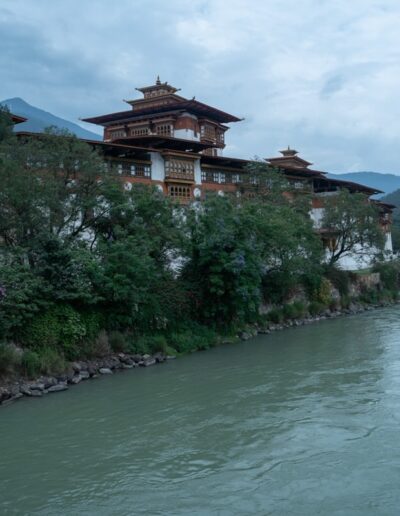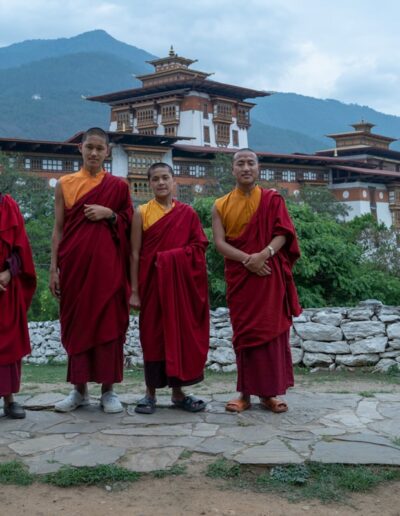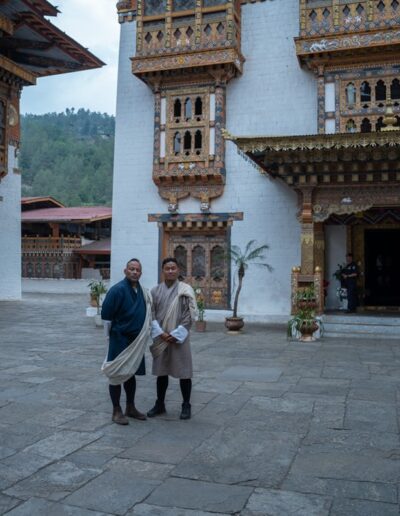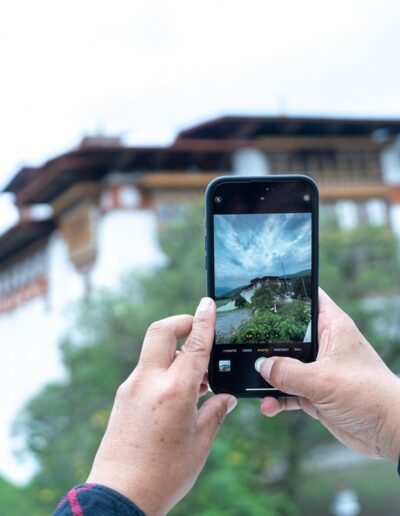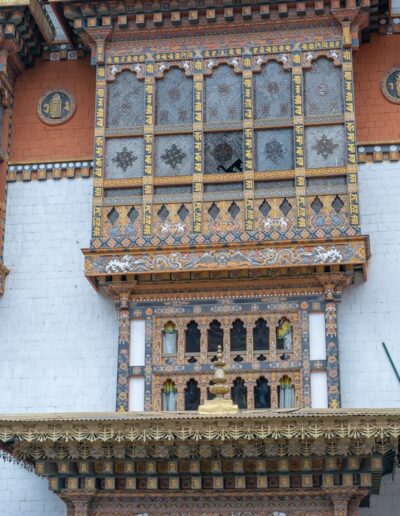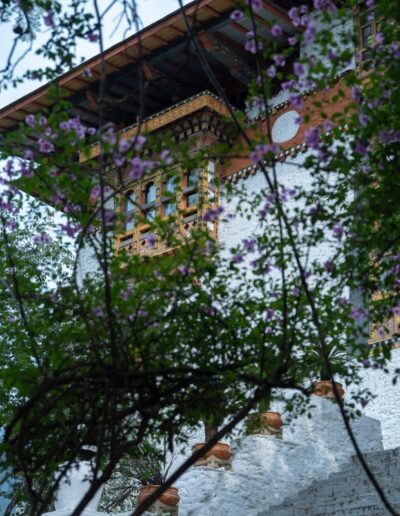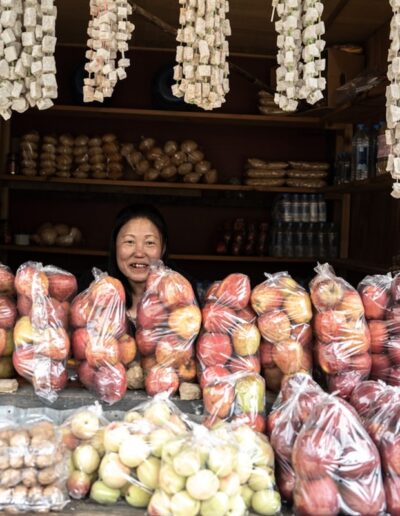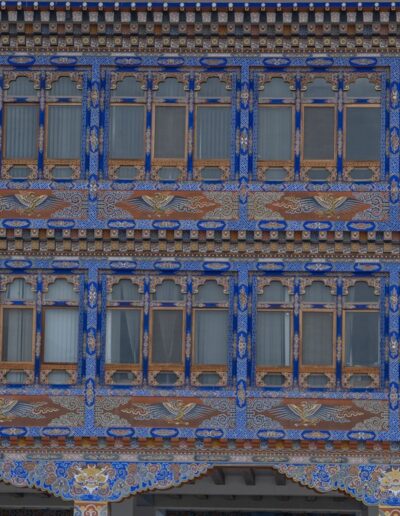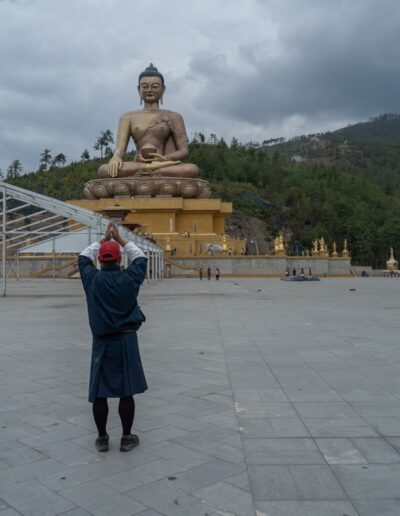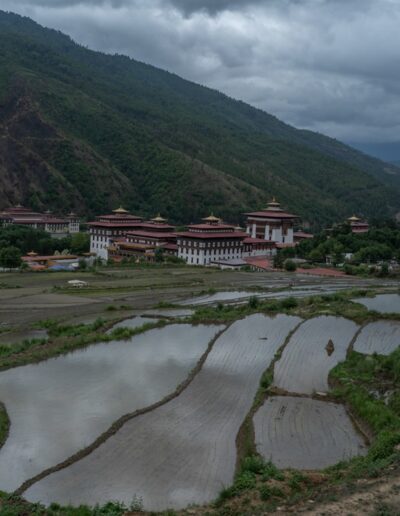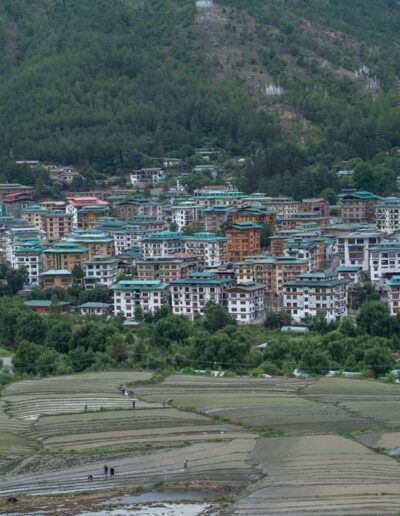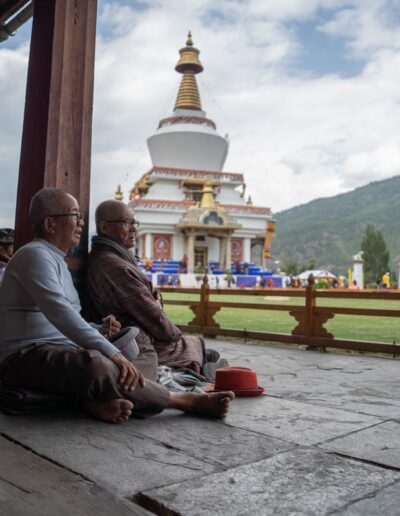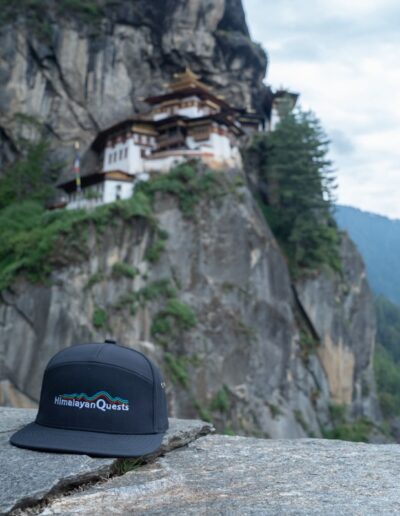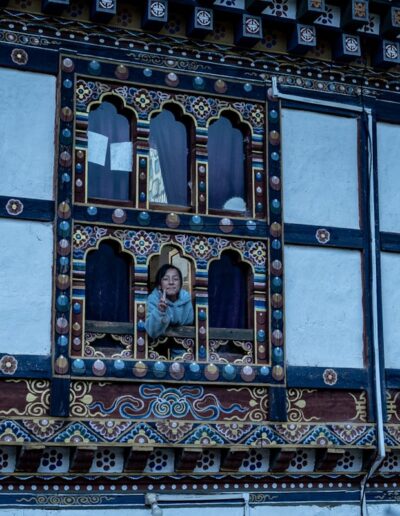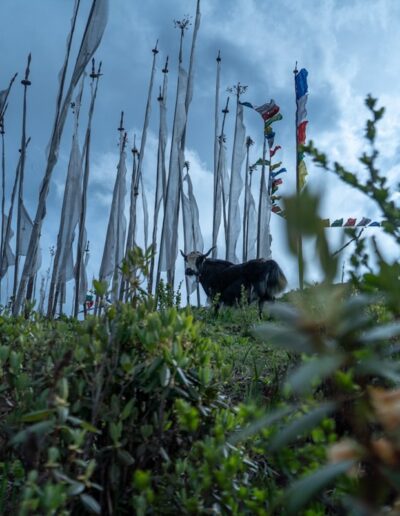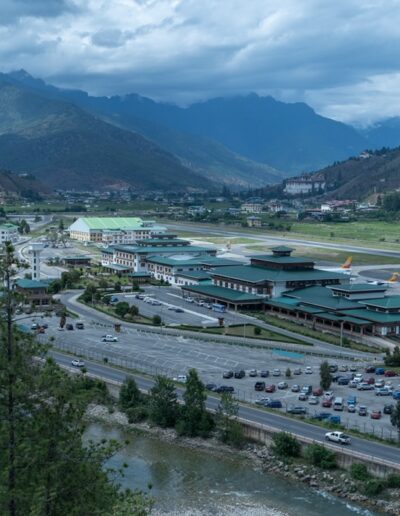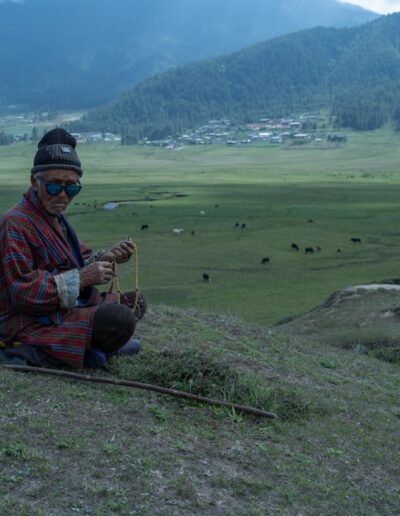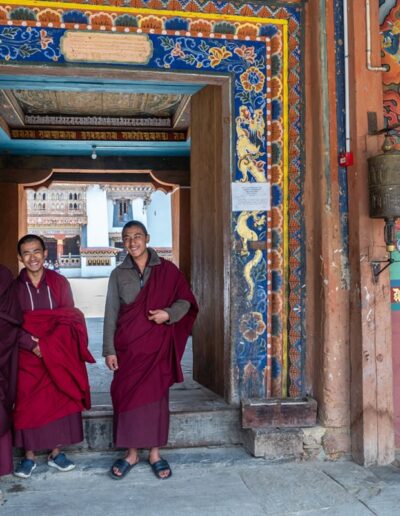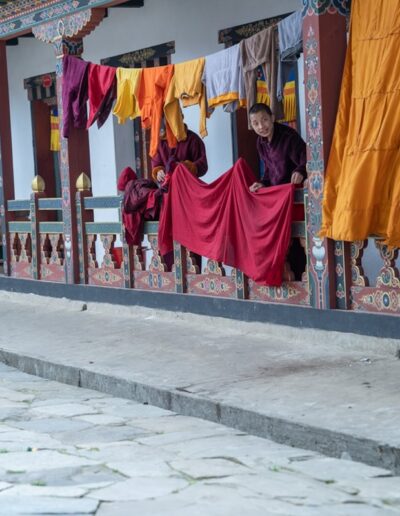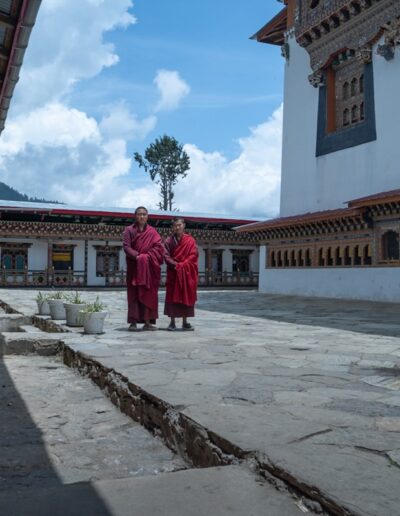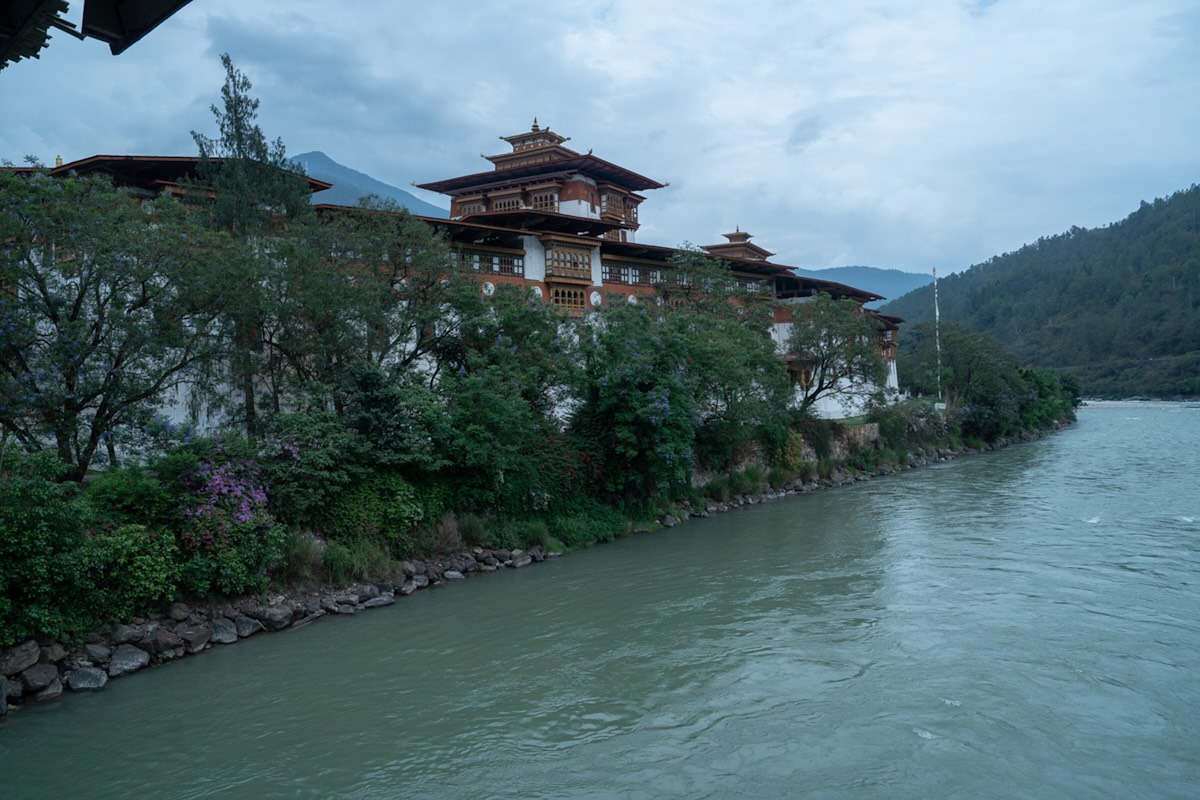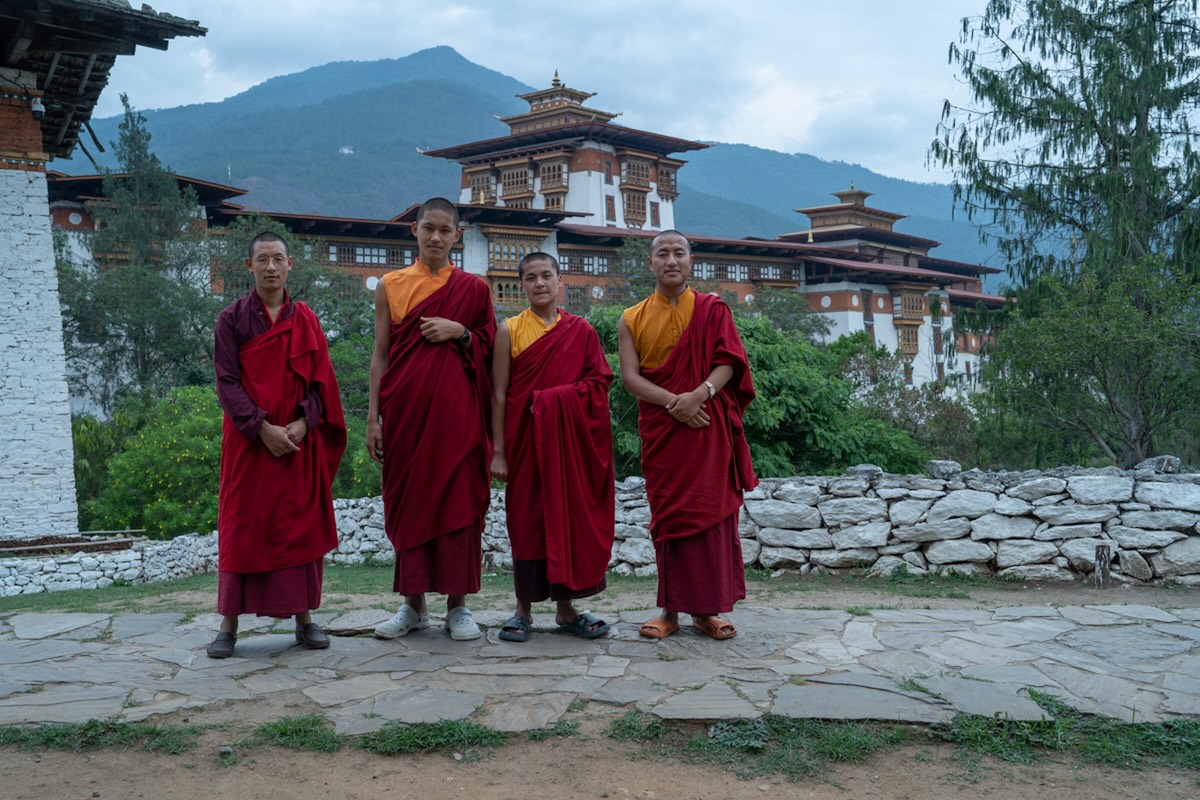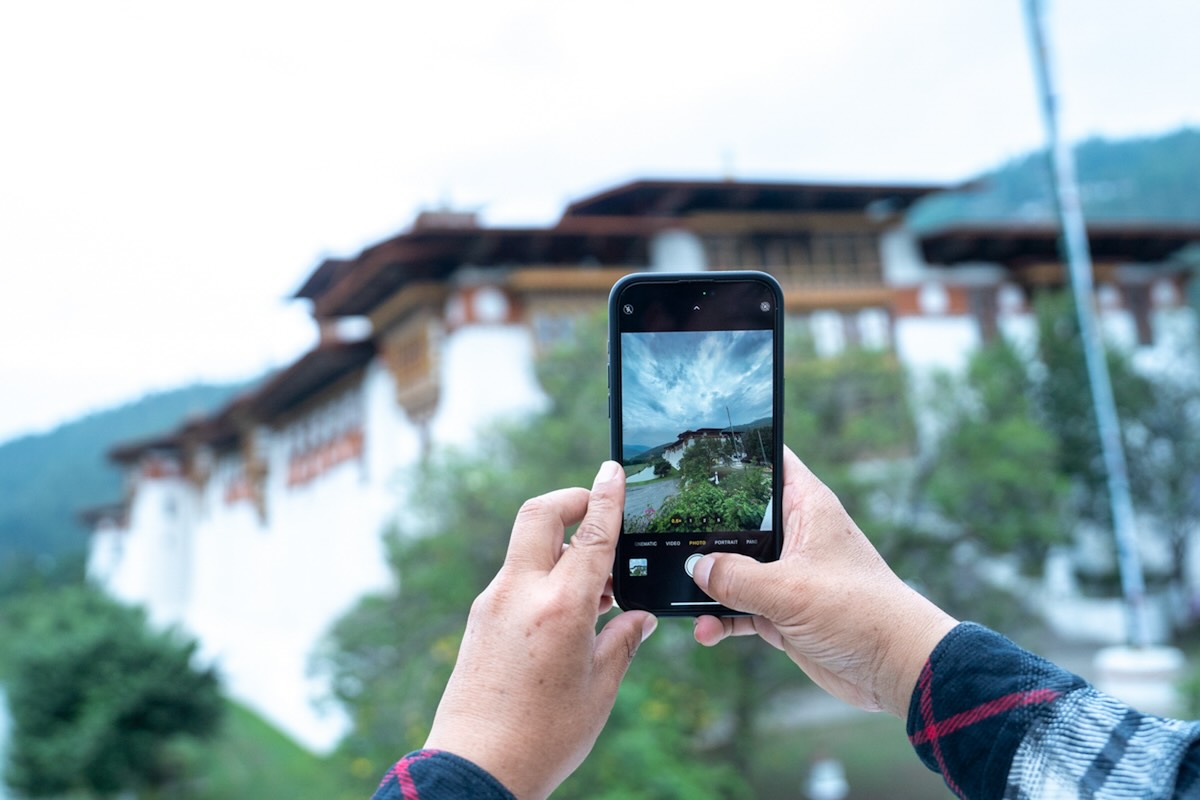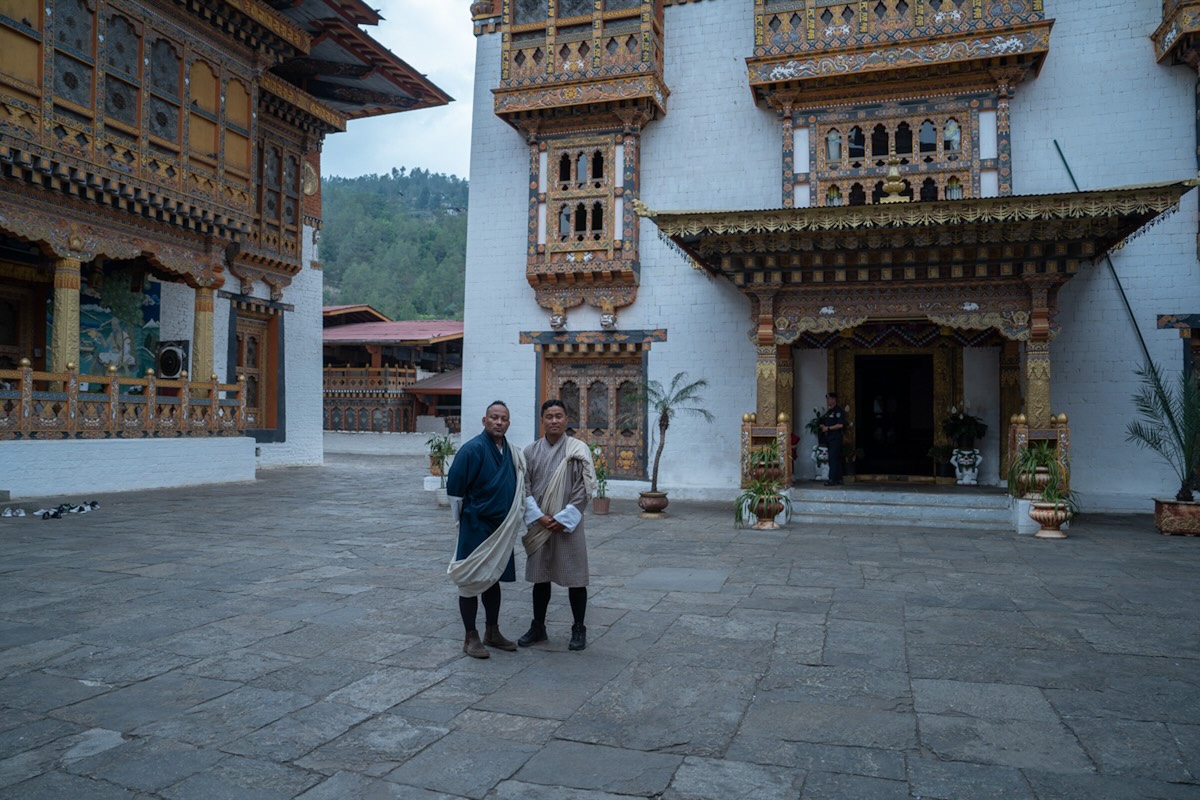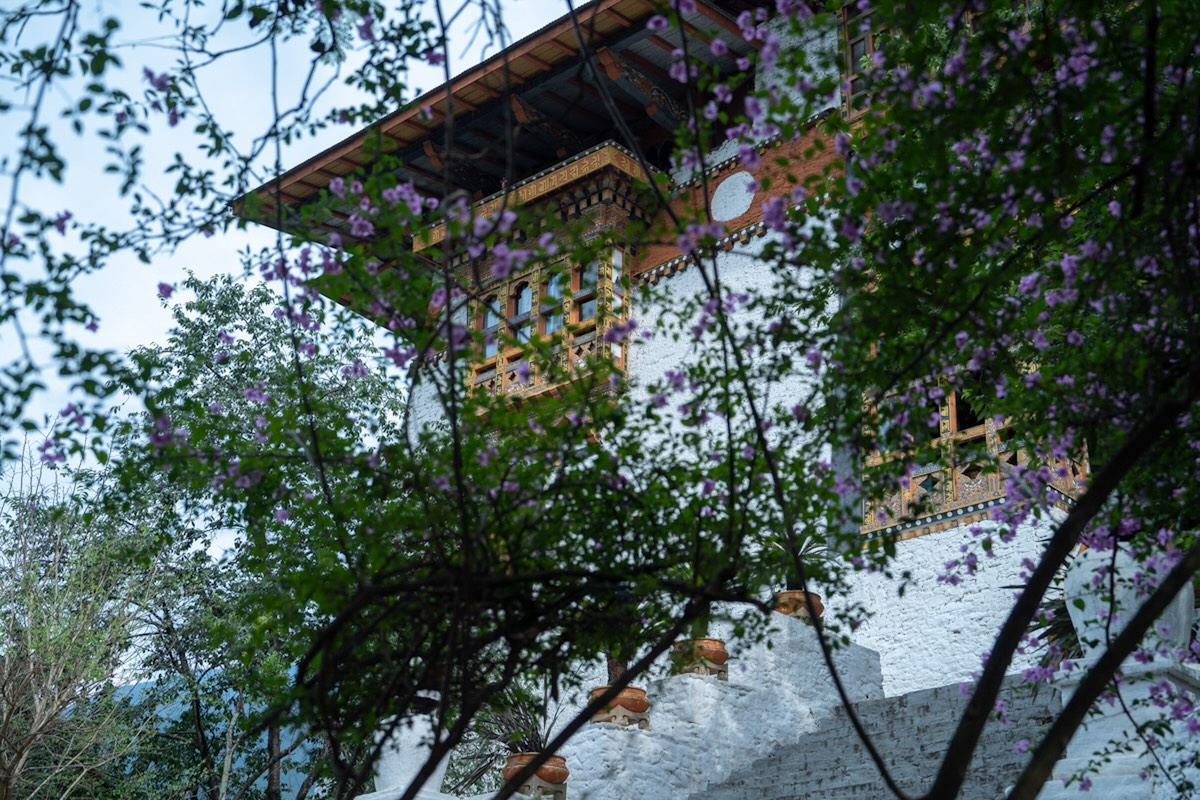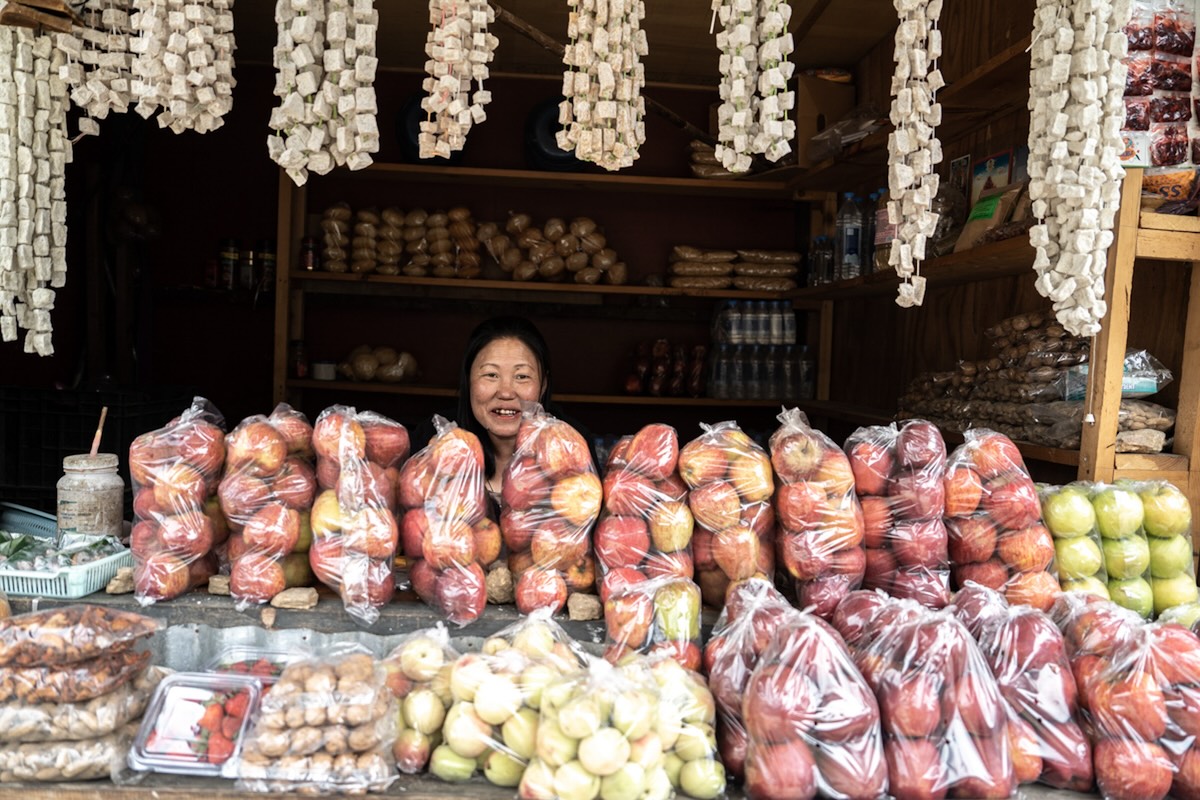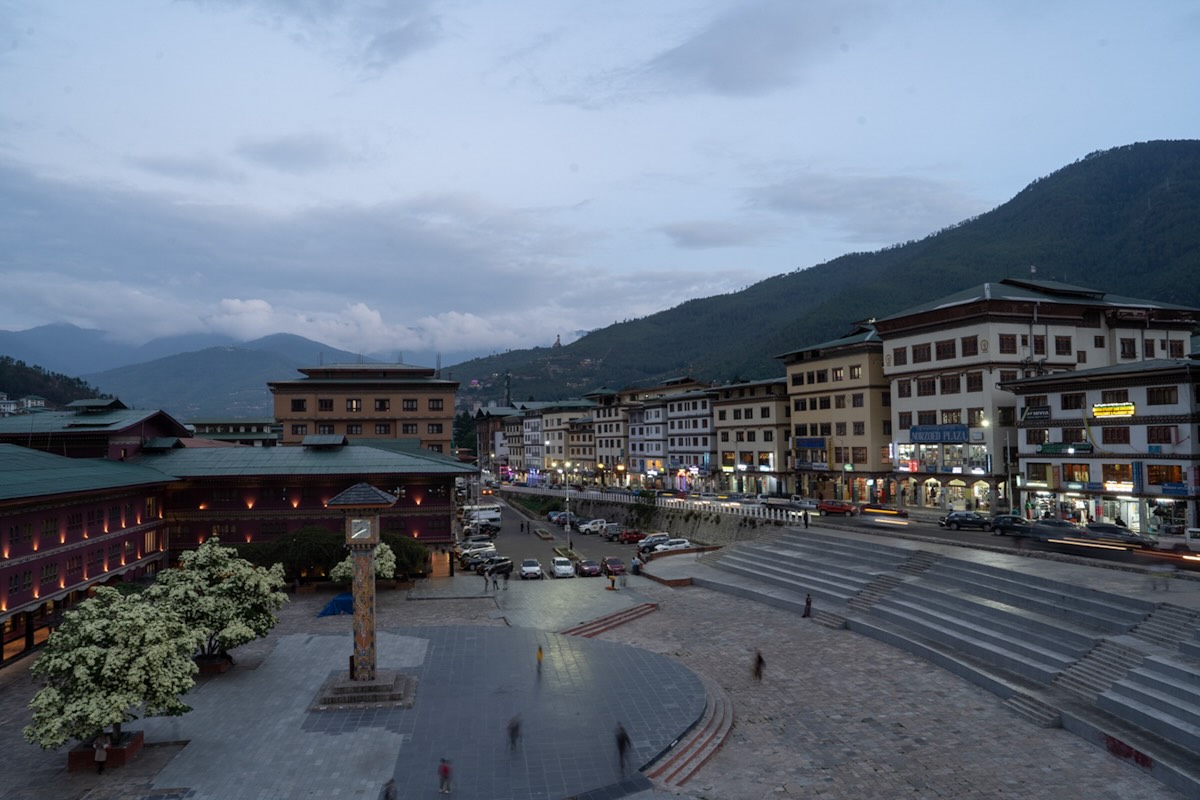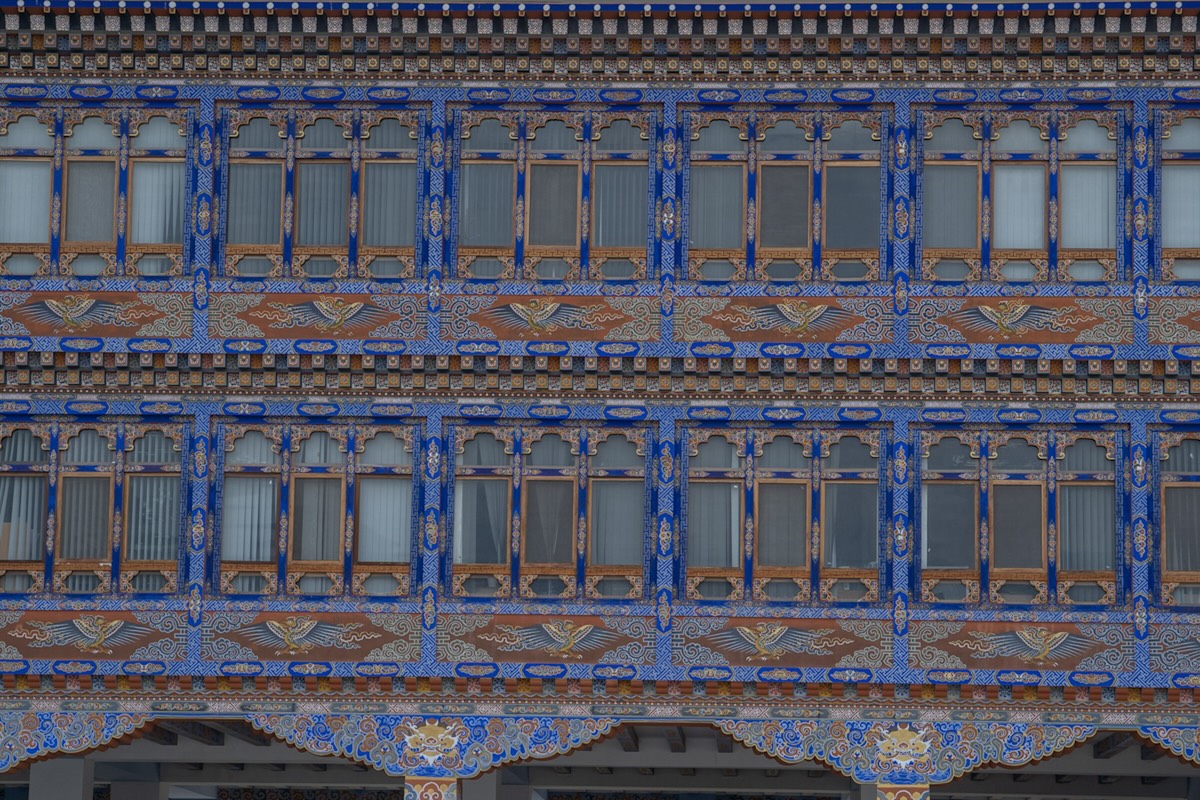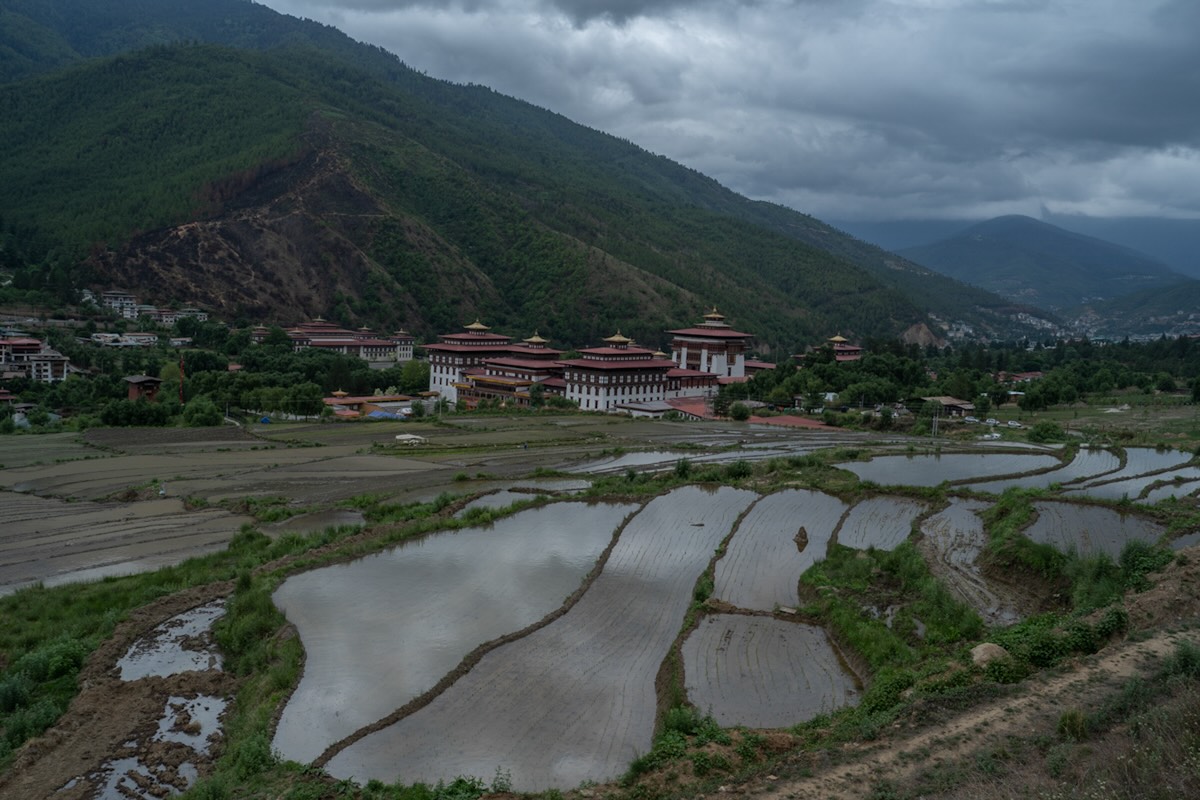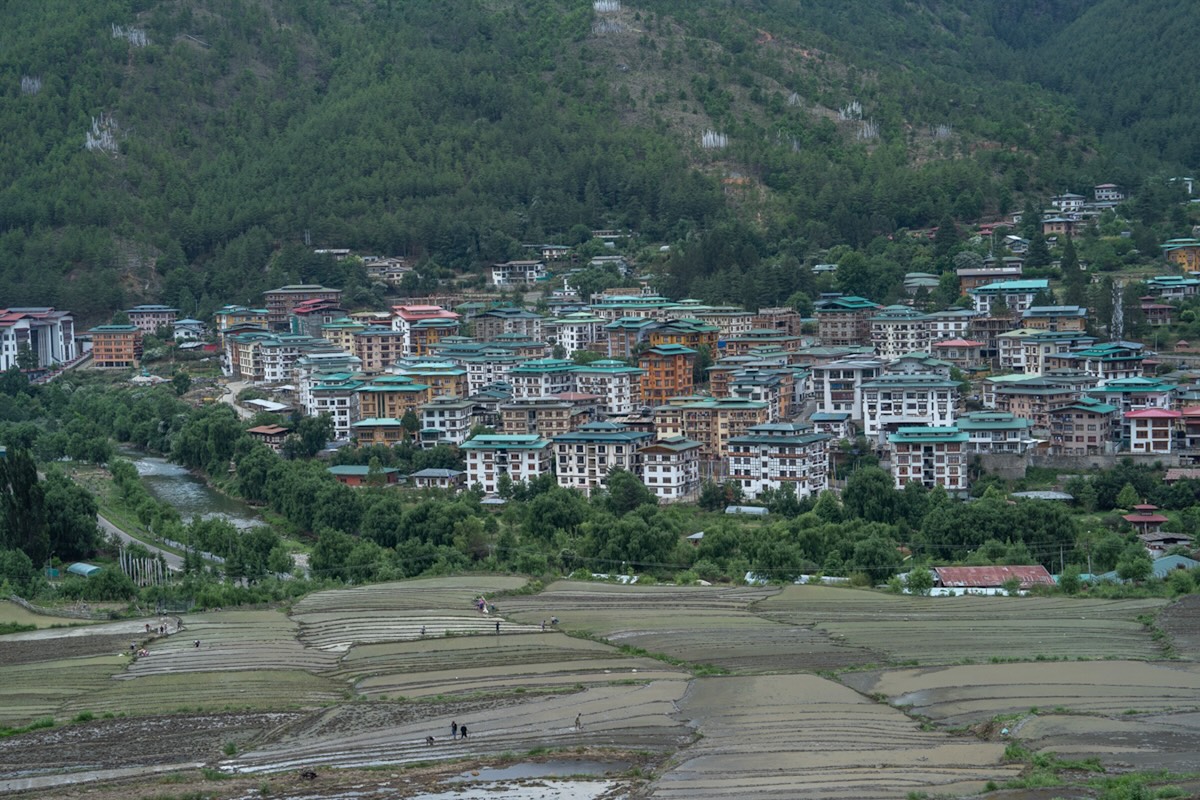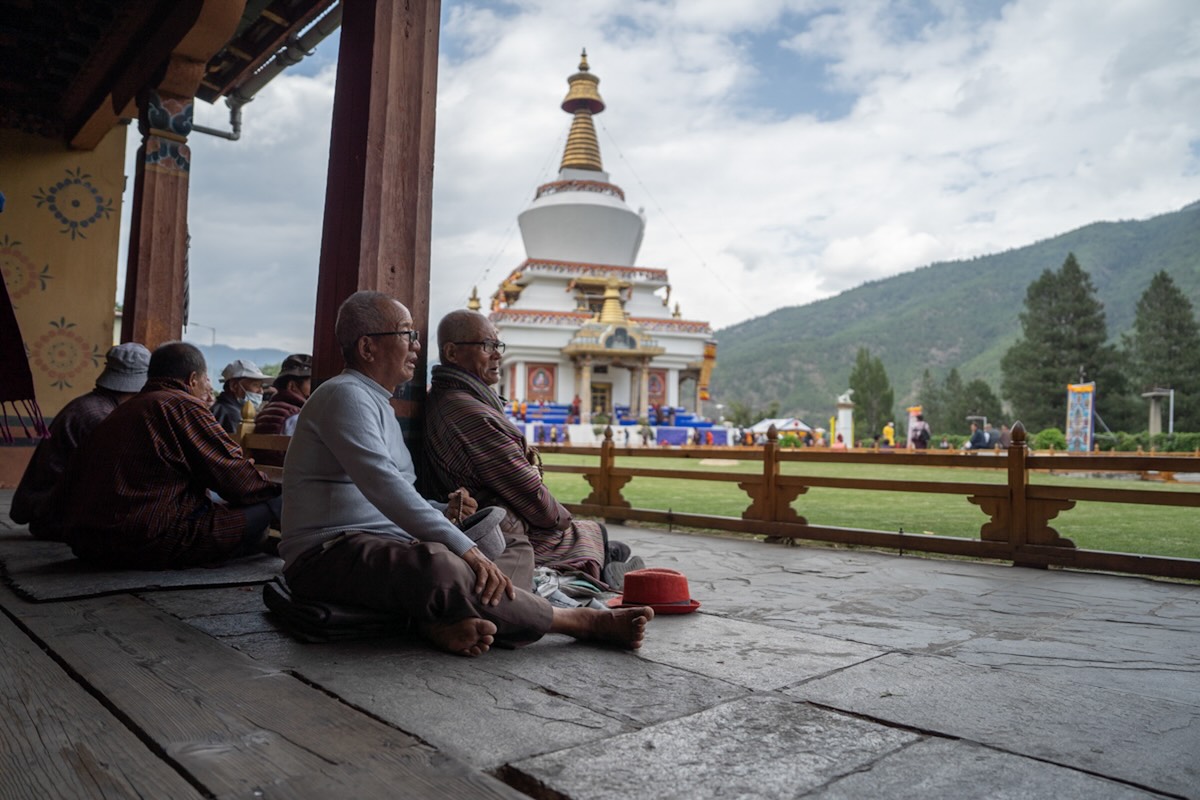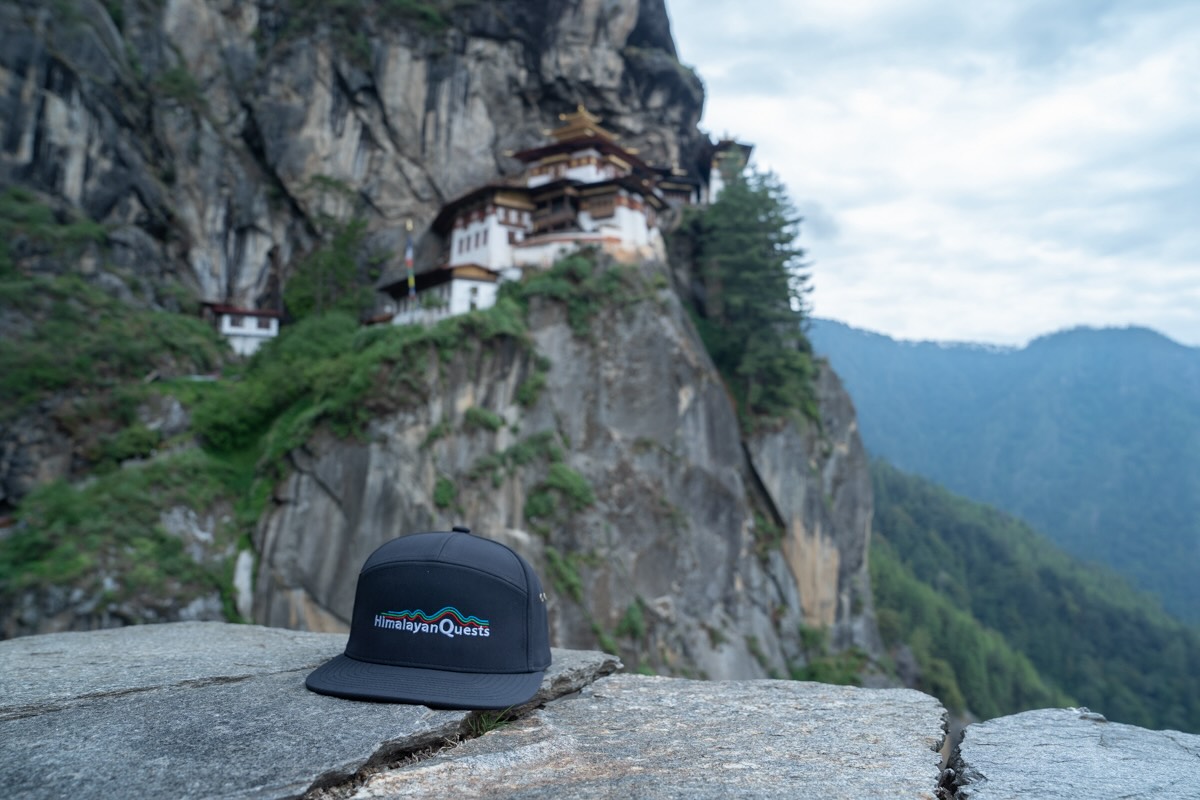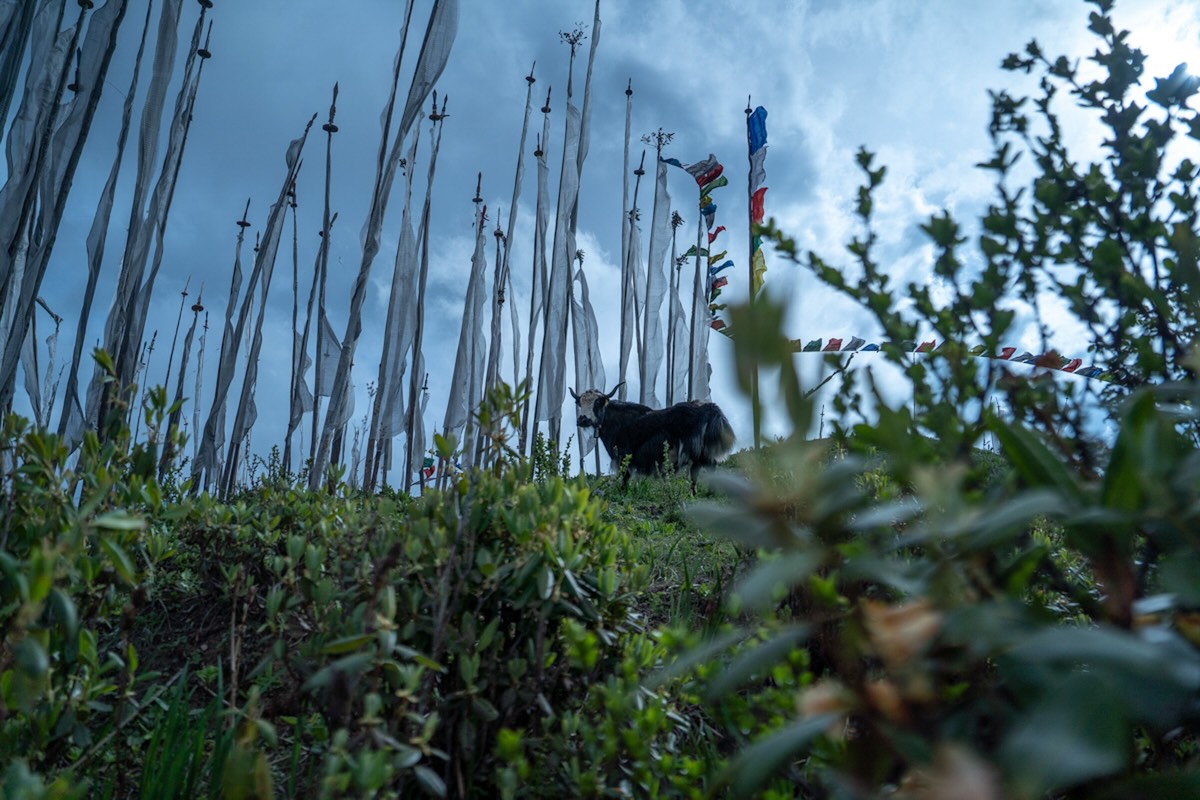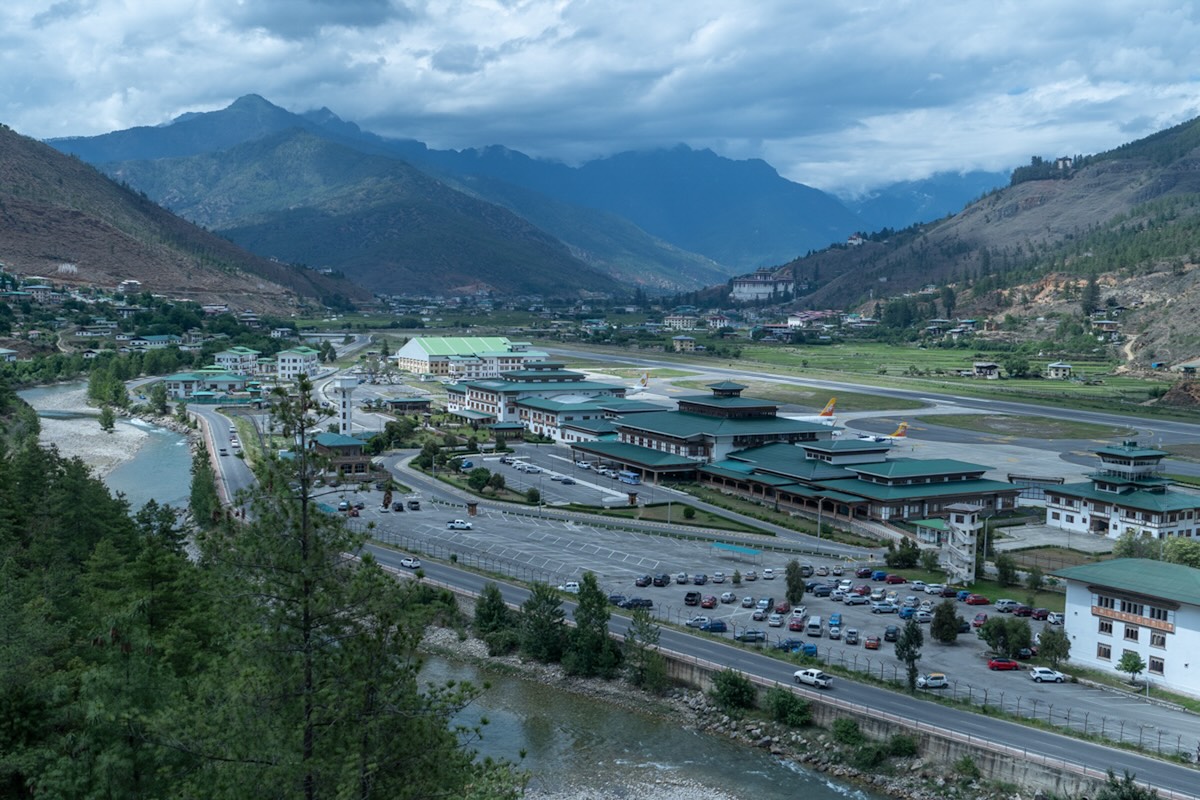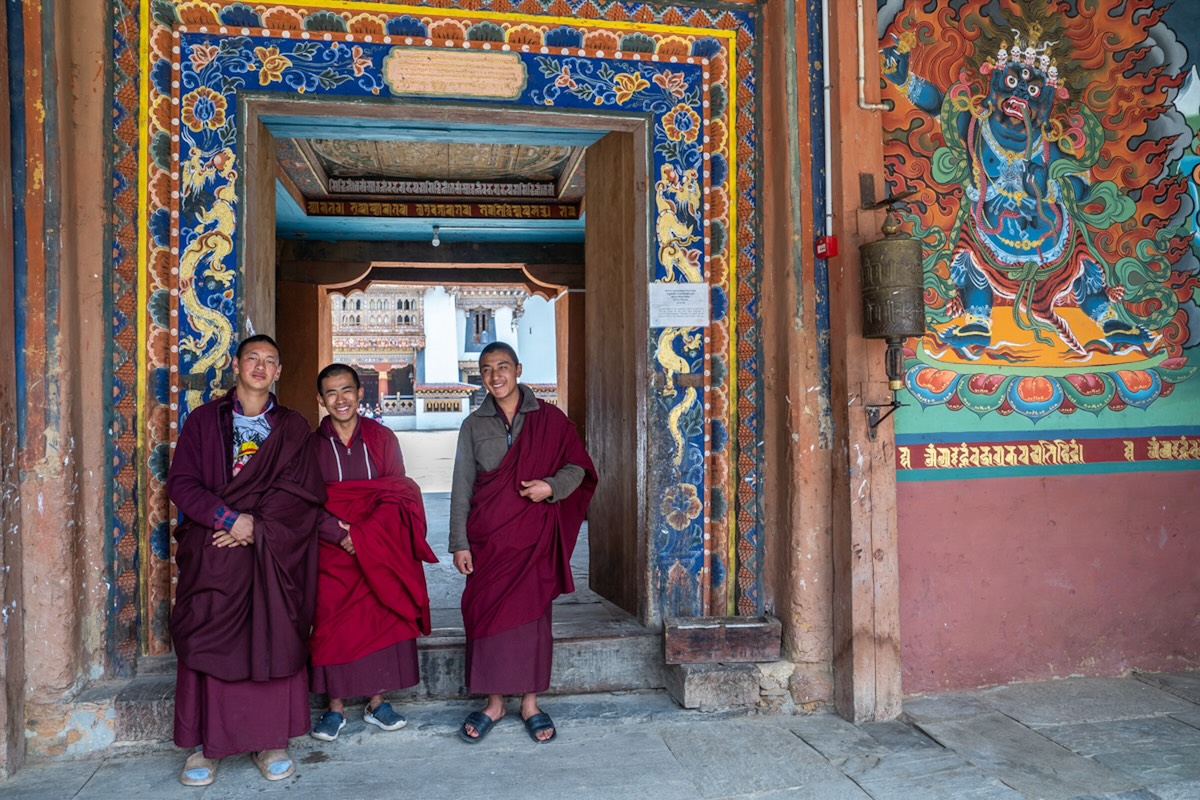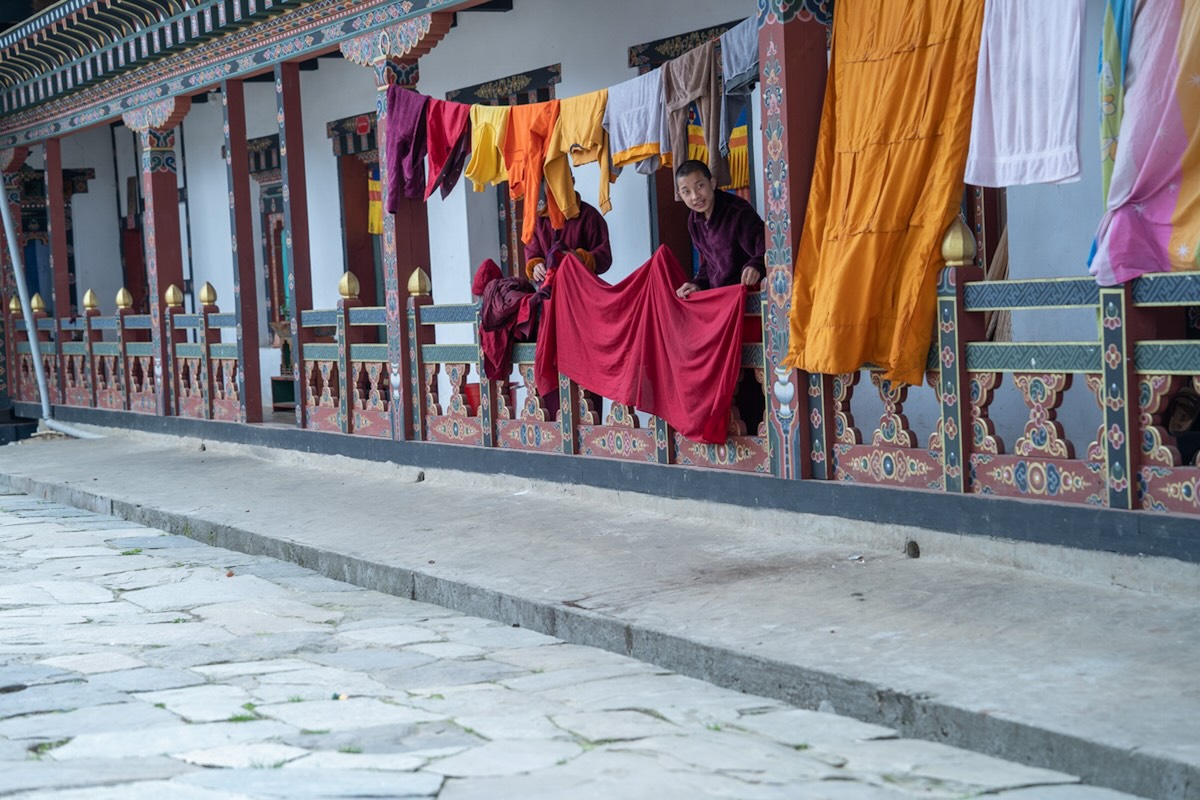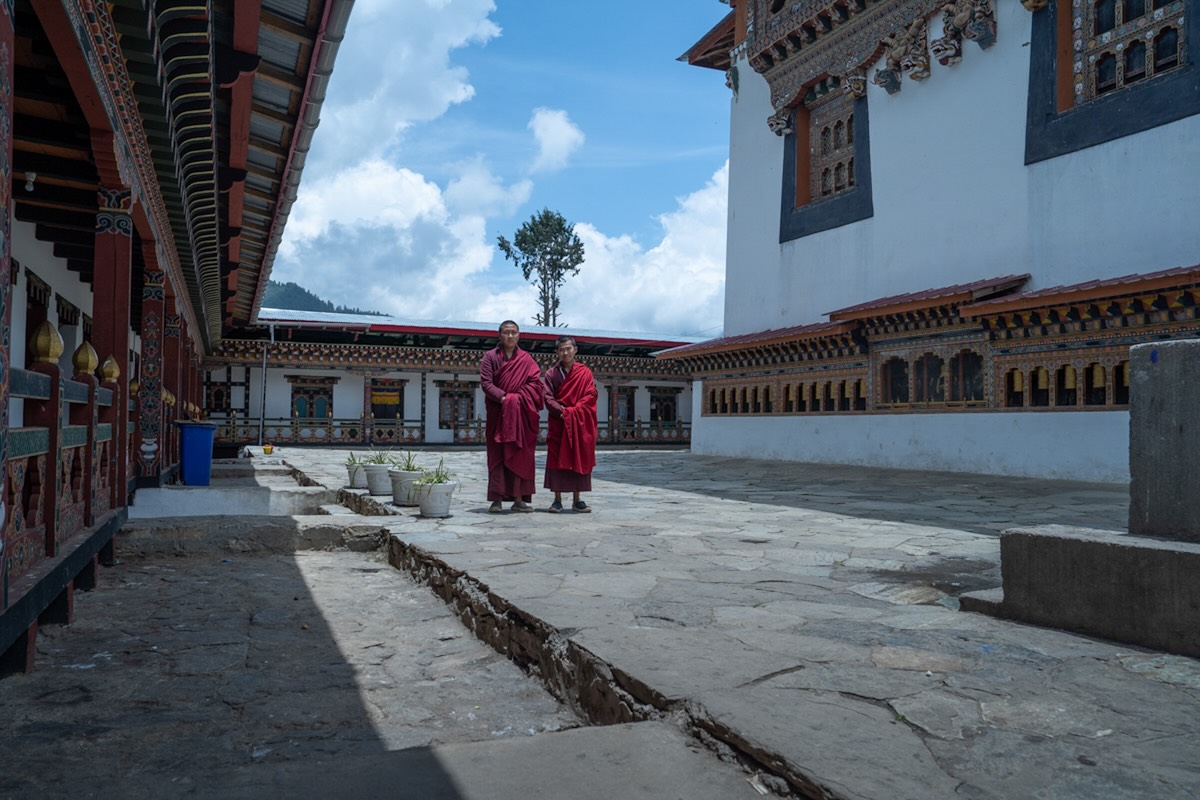DAYS
9
DIFFICULTY
Easy/Moderate
MAX ALTITUDE
3140 M
ACCOMMODATION
Hotels/Guesthouses/Homestay
DAYS
9
DIFFICULTY
Easy/Moderate
MAX ALTITUDE
3,140 M
ACCOMMODATION
Hotels/Guesthouses/Homestay
Trip Overview
The Best of Bhutan tour is a customised trip designed to give you an unparallelled insight into Bhutan, its culture, nature, people and the Bhutanese way of life. The tour starts in the capital city of Thimphu, where you will explore the sights, sounds and culture of this striking city. From Thimphu you will head out into the countryside where you will have the opportunity to explore the valleys of Thimphu, Punakha, Tangsibji and Bumthang on foot, before taking a short flight to Paro to end your trip at Bhutan’s iconic Tiger’s Nest Monastery.
Day 1
Fly Kathmandu to Paro, a spectacular flight through the high Himalayas, offering dazzling scenic views of the world’s highest glacial peaks where you’ll be greeted by views of Mt. Everest, Mt. Kanchenjunga and Bhutan’s very own Mt. Jomolhari and Mt. Jichu Drakey. As your flight descends into Paro valley, you’ll get your first impression of Bhutan – forested hills; the silvery Pa Chu (Paro river) meandering down the valley below the idyllic Paro Dzong (fortress) located atop a hill overlooking the valley.
Upon arrival you’ll be received by your guide and then make the hour long drive to the Thimphu. Enroute you will stop to visit the Tamchog Lhakang Monastery for a breath of fresh mountain air and to marvel at the iron bridge reconstructed using original chain links from the 13th century bridge.
On arrival at your hotel in Thimphu you will have the opportunity to have some down time before heading off after lunch to visit some of the cultural treasures of the capital. First stop will be the Memorial Chorten Stupa which is a sacred shrine built in the memory of third king of Bhutan. From here you will head to the Folk Heritage Museum, a 19th century traditional Bhutanese farmhouse providing glimpses of the Bhutanese lifestyle followed by the Royal Textile Museum & Academy which showcases Bhutan’s rich and famous textiles. You will finish the day strolling around the Crafts Bazaar, a series of stalls stretched along Thimphu’s main street, each offering an array of locally made traditional Bhutanese handicrafts and textiles for sale.
Dinner tonight will be authentic Bhutanese cuisine.
Overnight in Thimphu.
Day 2
Today you’ll get out of the city and into the countryside. After breakfast, you’ll drive to Dochula Pass (3,140m). Situated atop the pass with a backdrop of Himalayan vistsas and fluttering prayer flags are the Druk Wangyal Chortens, a collection of 108 chortens (stupas) that were built to exemplify the greatness of the Fourth King. You’ll then drive to Lamperi, where you’ll have the opportunity to hike a short section of the Trans-Bhutan Trail, an old heritage trail that was recently restored, descending to Thinleygang village. This trail goes through dense ancient forests that are good for birds and rhododendrons when in season, while passing through scenic villages. A picnic lunch will be waiting for you at the end of the walk overlooking the valley’s paddy fields.After lunch, you’ll drive to the low-lying rice valley of Lobesa and pay your respects to one of Bhutan’s most charming and eccentric historic figures nicknamed ‘The Divine Madman’ at the Chhimi Lhakhang, also called the fertility monastery. The visit involves a short hike through a beautiful village surrounded by paddy fields. Here you’ll visit local artist who specilised in Thangka painting; Tibetan Buddhist painting on cotton, silk appliqué, usually depicting a Buddhist deity, scene, or mandala.
Overnight in Punaka
Day 3
This morning you will drive to Punakha valley to visit Khamsum Yuelley Namgyal stupa, which involves a 45-minute scenic hike through paddy fields to the hill top where the stupa is situated. From here you can also enjoy a majestic view of the underlying valley. The temple itself is a splendid example of Bhutan’s fine architectural and artistic traditions and is the only one of its kind in the world. After returning back to your vehicle by the Punakha River, you’ll have the opportunity to see the local scenery from a different perspective as you drift down the valley by boat. This rafting trip is suitable for beginners and is also good opportunity to spot some of Bhutan’s bird life and in total takes about 3 hours. Upon arrival at your get-out point, a picnic lunch will be waiting for you on the river bank at the Zomlingthang picnic ground. While eating your lunch, you may have the opportunity to watch some locals enjoying a game of archery, the national sport of Bhutan.Afer lunch you’ll drive to Punakha Dzong, the most beautiful fortress in Bhutan, situated at the confluence of two rivers. This ancient fortress is the winter residence of the monastic order’s leadership and still serves as the administrative headquarters for the Punakha region.
From Punakha Dzong, you’ll head to Phobjikha(Gangtey) following the scenic Dang Chuu (river), climbing through forests of bamboo and oak and just before crossing Pele La pass, you take a small side road off into the hidden Phobjikha Valley.
Overnight in Phobjikha
Day 4
After breakfast you’ll head off on a beautiful nature hike. This easy 1-2-hour walk will take you through pine forests and open vistas looking out across the wooded slopes of the valley. This valley is different from others as it’s a glacial valley and home to the endangered Black-necked cranes who visit during the winter from the Tibetan plateau, resulting in it being a protected habitat for the birds. It’s other claim to fame, is that it is the potato basket of Bhutan, thereby a creating a great example of how agriculture and conservation work hand in hand. You will end the hike with a visit to the famous Gangtey Gonpa Monastery.
After lunch, you will drive to Pelela and if you are up for it, there is an optional 2-hour hike to Longtey on the Trans-Bhutan Trail. From here you will drive to the village of Tangsibji for an authentic rural Bhutan experience, staying overnight in a heritage farmhouse, hosted by two times winner of Bhutan’s Strongest Man competition.
Day 5
After breakfast you will have the opportunity to explore your host village, gaining an authentic experience of rural Bhutanese life. After lunch, you’ll say goodbye to your host family and drive to Bumthang Valley via Trongsa town.
You’ll stop in Trongsa to visit the Tower of Trongsa Museum, an old watchtower converted to a museum highlighting the establishment of Bhutan’s monarchy and its royal dynasty. From here you’ll visit the Trongsa fortress, a historically important fortress, as it was the central seat of the administration from where Bhutan’s monarchy was institutionalised in the early 1900s.
Your last stop of the day before heading to your guesthouse will be the Chumey Valley visit the famous textile weavers of Bumthang known for their Yatha textiles made out of yak wool.
Overnight in Gonkhar, Chamkhar Valley, Bumthang
Day 6
After breakfast you’ll have the opportunity to explore the Chamkhar Valley on foot, starting off with what is believed to be the country’s oldest Buddhist temple, the 7th century Jambay Lhakhang temple, built by King Songsen Goempo of Tibet in his bid to spread the Buddha’s dharma by building 108 monasteries across the Himalayas. This is one of two temples built in Bhutan. From here you’ll proceed to visit Kurjey Monastery which is considered as one of the most sacred shrines in the country as the Guru Rinpoche left a body print in his meditation cave.
After lunch at a local farmhouse, you’ll continue the short hike to visit Tamshing Lhakhang, founded in 1501 by Terton Pema Lingpa, one of the greatest Bhutanese saints. Each of these cultural hot-spots has its own history and stories that bear much significance to Bhutan’s traditions and cultural identity.Your next stop will be the Jakar Dzong fortress followed by an evening stroll around town, where you will have the opportunity to visit a local handloom weaving house and should you wish, also visit the cheese factory to see how local Gouda cheese is made. and to try the locally made Red Panda beer, which is actually white. Bumthang is known for its unique local cuisine and so tonight you’ll dine at a local restaurant while enjoying the locally made white Red Panda beer.Overnight in Gonkhar, Chamkhar Valley, Bumthang
Day 7
This morning you’ll hop on a short 30-minute domestic flight to Paro. The views from the plane are breath taking, showing the Himalayan mountain ranges of northern Bhutan. Today you’ll continue to explore the cultural highlights of Paro, with the first stop being the Dungtse Lhakhang, a unique temple built in the form of a chorten, one of the very few that exist in Bhutan. The Lhakhang was built in 1421 by the famous Tibetan lama, Thongten Gyelpo (1385-1465) who was also known as Changzampa, or the builder of iron bridges. After lunch, you’ll visit the Paro Rinpung Dzong fortress which overlooks the beautiful Paro River and then on to the National Museum where you can immerse yourself in the rich history and heritage of Bhutan. Your last monastery of the day will be Kyichu Lhakhang, the sister temple of Jambay Lhakhang in Bumthang, built during the 8th century and home to the original statue of Jowo Jamba, a sculture that is so sacred it is said that the mere sight of it can bring peace to one’s soul.
This evening, you’ll visit a heritage farmhouse to experience the traditional hot-stone bath and dine on local cuisine unique to this valley.
Overnight in Paro
Day 8
Today you’ll experience Bhutan’s most famous attraction and perhaps the biggest highlight of the trip, an excursion to the famous Taktshang Monastery, or Tiger’s Nest Monastery. The monastery was built in 1692 by a prominent historical figure named Gyaltse Tenzin Rabgye, whose reincarnation is now a young teenager and already a prominent figure in the clergy. It is slow climb to the monastery, covering over 800 steps, but well worth the effort. It is possible to hire a pony (at additional cost) to take you half way, but the final half is only accessible by foot.
On the way back to Paro you will have the opportunity to visit the ruins of Drugyal Dzong fortress, important to Bhutanese heritage as it served as a strategic watchtower and fortress that helped repel numerous Tibetan invasions in the 1600s. The peak of Jumolhari, Mountain of the Goddess (7,329m) can be seen from here on a clear. You last stop for the day, before heading back to your hotel will be the Rimpung Dzong, or Fortress of the Heap of Jewels, built in the year 1644 by Zhabdrung, a dynamic political and spiritual leader.
Once back at your hotel and after you have freshened up, it will be time for your farewell dinner and last opportunity to explore the streets and shops of Paro.
Overnight in Paro
Day 09
After breakfast at your hotel, your driver will take you to the airport for your return journey.
Notes:
The trek itinerary is a guide only and may be subject to change at short notice
All-inclusive Tour Costs for 08Nights/9 Days for twin-sharing
Price Inclusions:
- Sustainable Tourism Fee/ Tourism Tax payable to govt. (US$ 800 per person) payable to the Govt.
- Visa Fees (US$ 40 per person) payable to the Department of Immigration
- Monument fees worth US$ 200 payable to the Department of Culture
- All necessary park permits fees
- All transfers and sightseeing
- All meals and evening tea
- All accommodation in 3-4 star hotels
- English-speaking tour leader and drive
- All inland transfers
- Complimentary hot-stone bath
- Domestic flight from Bumthang to Paro
- Round-trip airfare from Kathmandu
Your trek cost does NOT include:
- International flights to and from Kathmandu, Nepal
- Visa for Nepal
- Travel insurance (insurance to include evacuation is mandatory. Please make sure you are covered to the correct altitude)
- Personal expenses such as fizzy drinks, chocolate, gifts, snacks, hot showers during the trek, etc.
- Meals unless specified
- Sightseeing
- Gratuities
- Excess baggage on internal flights
- Charges incurred as a result of delays beyond the control of Himalayan Quests
Day 1
Fly Kathmandu to Paro, a spectacular flight through the high Himalayas, offering dazzling scenic views of the world’s highest glacial peaks where you’ll be greeted by views of Mt. Everest, Mt. Kanchenjunga and Bhutan’s very own Mt. Jomolhari and Mt. Jichu Drakey. As your flight descends into Paro valley, you’ll get your first impression of Bhutan – forested hills; the silvery Pa Chu (Paro river) meandering down the valley below the idyllic Paro Dzong (fortress) located atop a hill overlooking the valley.
Upon arrival you’ll be received by your guide and then make the hour long drive to the Thimphu. Enroute you will stop to visit the Tamchog Lhakang Monastery for a breath of fresh mountain air and to marvel at the iron bridge reconstructed using original chain links from the 13th century bridge.
On arrival at your hotel in Thimphu you will have the opportunity to have some down time before heading off after lunch to visit some of the cultural treasures of the capital. First stop will be the Memorial Chorten Stupa which is a sacred shrine built in the memory of third king of Bhutan. From here you will head to the Folk Heritage Museum, a 19th century traditional Bhutanese farmhouse providing glimpses of the Bhutanese lifestyle followed by the Royal Textile Museum & Academy which showcases Bhutan’s rich and famous textiles. You will finish the day strolling around the Crafts Bazaar, a series of stalls stretched along Thimphu’s main street, each offering an array of locally made traditional Bhutanese handicrafts and textiles for sale.
Dinner tonight will be authentic Bhutanese cuisine.
Overnight in Thimphu.
Day 2
Today you’ll get out of the city and into the countryside. After breakfast, you’ll drive to Dochula Pass (3,140m). Situated atop the pass with a backdrop of Himalayan vistsas and fluttering prayer flags are the Druk Wangyal Chortens, a collection of 108 chortens (stupas) that were built to exemplify the greatness of the Fourth King. You’ll then drive to Lamperi, where you’ll have the opportunity to hike a short section of the Trans-Bhutan Trail, an old heritage trail that was recently restored, descending to Thinleygang village. This trail goes through dense ancient forests that are good for birds and rhododendrons when in season, while passing through scenic villages. A picnic lunch will be waiting for you at the end of the walk overlooking the valley’s paddy fields.After lunch, you’ll drive to the low-lying rice valley of Lobesa and pay your respects to one of Bhutan’s most charming and eccentric historic figures nicknamed ‘The Divine Madman’ at the Chhimi Lhakhang, also called the fertility monastery. The visit involves a short hike through a beautiful village surrounded by paddy fields. Here you’ll visit local artist who specilised in Thangka painting; Tibetan Buddhist painting on cotton, silk appliqué, usually depicting a Buddhist deity, scene, or mandala.
Overnight in Punaka
Day 3
This morning you will drive to Punakha valley to visit Khamsum Yuelley Namgyal stupa, which involves a 45-minute scenic hike through paddy fields to the hill top where the stupa is situated. From here you can also enjoy a majestic view of the underlying valley. The temple itself is a splendid example of Bhutan’s fine architectural and artistic traditions and is the only one of its kind in the world. After returning back to your vehicle by the Punakha River, you’ll have the opportunity to see the local scenery from a different perspective as you drift down the valley by boat. This rafting trip is suitable for beginners and is also good opportunity to spot some of Bhutan’s bird life and in total takes about 3 hours. Upon arrival at your get-out point, a picnic lunch will be waiting for you on the river bank at the Zomlingthang picnic ground. While eating your lunch, you may have the opportunity to watch some locals enjoying a game of archery, the national sport of Bhutan.Afer lunch you’ll drive to Punakha Dzong, the most beautiful fortress in Bhutan, situated at the confluence of two rivers. This ancient fortress is the winter residence of the monastic order’s leadership and still serves as the administrative headquarters for the Punakha region.
From Punakha Dzong, you’ll head to Phobjikha(Gangtey) following the scenic Dang Chuu (river), climbing through forests of bamboo and oak and just before crossing Pele La pass, you take a small side road off into the hidden Phobjikha Valley.
Overnight in Phobjikha
Day 4
After breakfast you’ll head off on a beautiful nature hike. This easy 1-2-hour walk will take you through pine forests and open vistas looking out across the wooded slopes of the valley. This valley is different from others as it’s a glacial valley and home to the endangered Black-necked cranes who visit during the winter from the Tibetan plateau, resulting in it being a protected habitat for the birds. It’s other claim to fame, is that it is the potato basket of Bhutan, thereby a creating a great example of how agriculture and conservation work hand in hand. You will end the hike with a visit to the famous Gangtey Gonpa Monastery.
After lunch, you will drive to Pelela and if you are up for it, there is an optional 2-hour hike to Longtey on the Trans-Bhutan Trail. From here you will drive to the village of Tangsibji for an authentic rural Bhutan experience, staying overnight in a heritage farmhouse, hosted by two times winner of Bhutan’s Strongest Man competition.
Day 5
After breakfast you will have the opportunity to explore your host village, gaining an authentic experience of rural Bhutanese life. After lunch, you’ll say goodbye to your host family and drive to Bumthang Valley via Trongsa town.
You’ll stop in Trongsa to visit the Tower of Trongsa Museum, an old watchtower converted to a museum highlighting the establishment of Bhutan’s monarchy and its royal dynasty. From here you’ll visit the Trongsa fortress, a historically important fortress, as it was the central seat of the administration from where Bhutan’s monarchy was institutionalised in the early 1900s.
Your last stop of the day before heading to your guesthouse will be the Chumey Valley visit the famous textile weavers of Bumthang known for their Yatha textiles made out of yak wool.
Overnight in Gonkhar, Chamkhar Valley, Bumthang
Day 6
After breakfast you’ll have the opportunity to explore the Chamkhar Valley on foot, starting off with what is believed to be the country’s oldest Buddhist temple, the 7th century Jambay Lhakhang temple, built by King Songsen Goempo of Tibet in his bid to spread the Buddha’s dharma by building 108 monasteries across the Himalayas. This is one of two temples built in Bhutan. From here you’ll proceed to visit Kurjey Monastery which is considered as one of the most sacred shrines in the country as the Guru Rinpoche left a body print in his meditation cave.
After lunch at a local farmhouse, you’ll continue the short hike to visit Tamshing Lhakhang, founded in 1501 by Terton Pema Lingpa, one of the greatest Bhutanese saints. Each of these cultural hot-spots has its own history and stories that bear much significance to Bhutan’s traditions and cultural identity.Your next stop will be the Jakar Dzong fortress followed by an evening stroll around town, where you will have the opportunity to visit a local handloom weaving house and should you wish, also visit the cheese factory to see how local Gouda cheese is made. and to try the locally made Red Panda beer, which is actually white. Bumthang is known for its unique local cuisine and so tonight you’ll dine at a local restaurant while enjoying the locally made white Red Panda beer.Overnight in Gonkhar, Chamkhar Valley, Bumthang
Day 7
This morning you’ll hop on a short 30-minute domestic flight to Paro. The views from the plane are breath taking, showing the Himalayan mountain ranges of northern Bhutan. Today you’ll continue to explore the cultural highlights of Paro, with the first stop being the Dungtse Lhakhang, a unique temple built in the form of a chorten, one of the very few that exist in Bhutan. The Lhakhang was built in 1421 by the famous Tibetan lama, Thongten Gyelpo (1385-1465) who was also known as Changzampa, or the builder of iron bridges. After lunch, you’ll visit the Paro Rinpung Dzong fortress which overlooks the beautiful Paro River and then on to the National Museum where you can immerse yourself in the rich history and heritage of Bhutan. Your last monastery of the day will be Kyichu Lhakhang, the sister temple of Jambay Lhakhang in Bumthang, built during the 8th century and home to the original statue of Jowo Jamba, a sculture that is so sacred it is said that the mere sight of it can bring peace to one’s soul.
This evening, you’ll visit a heritage farmhouse to experience the traditional hot-stone bath and dine on local cuisine unique to this valley.
Overnight in Paro
Day 8
Today you’ll experience Bhutan’s most famous attraction and perhaps the biggest highlight of the trip, an excursion to the famous Taktshang Monastery, or Tiger’s Nest Monastery. The monastery was built in 1692 by a prominent historical figure named Gyaltse Tenzin Rabgye, whose reincarnation is now a young teenager and already a prominent figure in the clergy. It is slow climb to the monastery, covering over 800 steps, but well worth the effort. It is possible to hire a pony (at additional cost) to take you half way, but the final half is only accessible by foot.
On the way back to Paro you will have the opportunity to visit the ruins of Drugyal Dzong fortress, important to Bhutanese heritage as it served as a strategic watchtower and fortress that helped repel numerous Tibetan invasions in the 1600s. The peak of Jumolhari, Mountain of the Goddess (7,329m) can be seen from here on a clear. You last stop for the day, before heading back to your hotel will be the Rimpung Dzong, or Fortress of the Heap of Jewels, built in the year 1644 by Zhabdrung, a dynamic political and spiritual leader.
Once back at your hotel and after you have freshened up, it will be time for your farewell dinner and last opportunity to explore the streets and shops of Paro.
Overnight in Paro
Day 09
After breakfast at your hotel, your driver will take you to the airport for your return journey
Notes:
The trek itinerary is a guide only and may be subject to change at short notice
Your trek cost includes:
- Pre-trip advice and detailed information
- Expert trip leadership and motivated staff for the duration of the trek
- Airport transfers in Nepal (where applicable)
- 2 nights accommodation pre-trek & 1-night post-trek in Kathmandu
- 1-night accommodation pre or post-trek in Pokhara (where applicable)
- Transportation to and from trek start and finish for you and your trekking team (different budget options available)
- Basic teahouse/lodge/camping accommodation during the trek on a twin sharing basis
- During the trek all meals on a full board basis (breakfast, lunch, and dinner) to include tea/coffee during the meals, but excluding any drinks outside of the meal times
- All permits, conservation area, and restricted area fees
- Porters
- Insurance and equipment for Nepali staff
- Rescue assistance
- Group medical kit
Your trek cost does NOT include:
- International flights to and from Kathmandu, Nepal
- Visa for Nepal
- Travel insurance (insurance to include evacuation is mandatory. Please make sure you are covered to the correct altitude)
- Personal expenses such as fizzy drinks, chocolate, gifts, snacks, hot showers during the trek, etc.
- Meals unless specified
- Sightseeing
- Gratuities
- Excess baggage on internal flights
- Charges incurred as a result of delays beyond the control of Himalayan Quests
Similar Trips
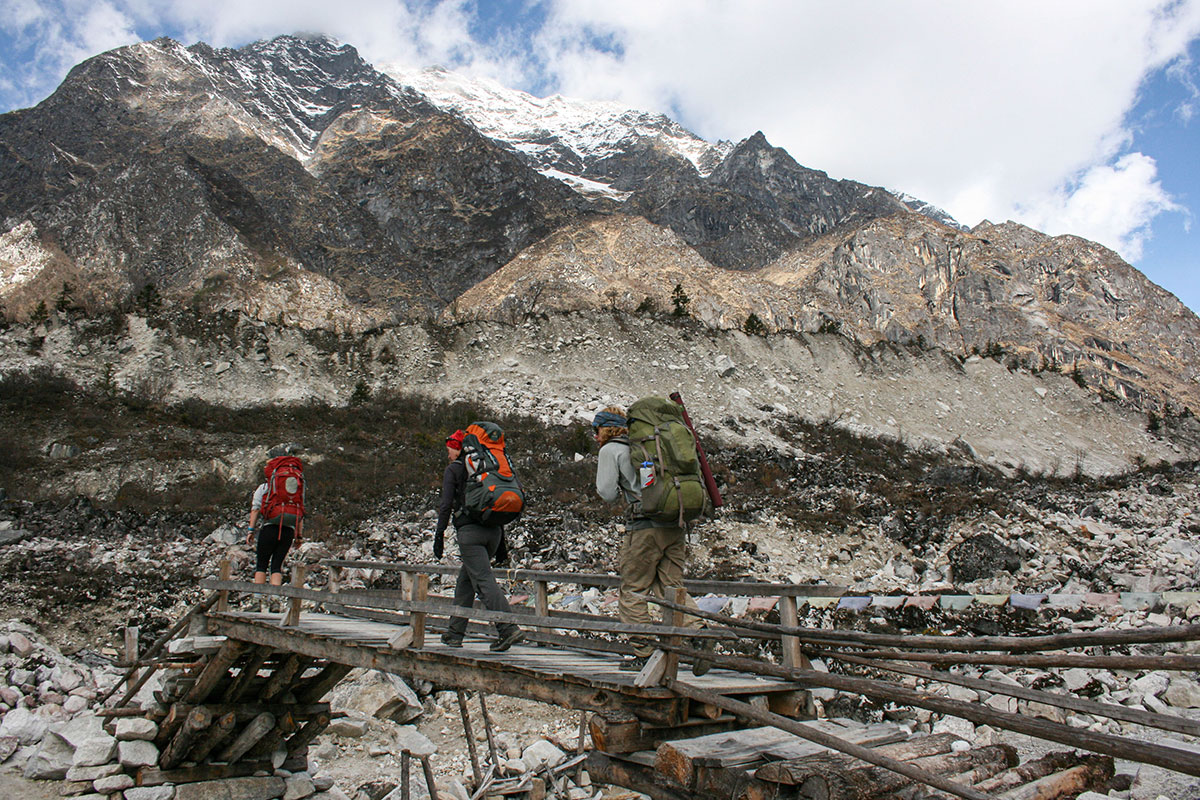
Tsum Valley Manaslu Circuit Trek
22 Days
Just as diverse as the ethnic population, so too the scenery varies from the lush, low elevation valleys growing rice and bananas, inhabited predominantly by the Hindu ethnic groups of Indo-Aryan origin, through rhododendron and bamboo forests, where you begin to encounter communities of Tibeto-Burmese origin who practice Hinduism, Buddhism or a mixture of both.
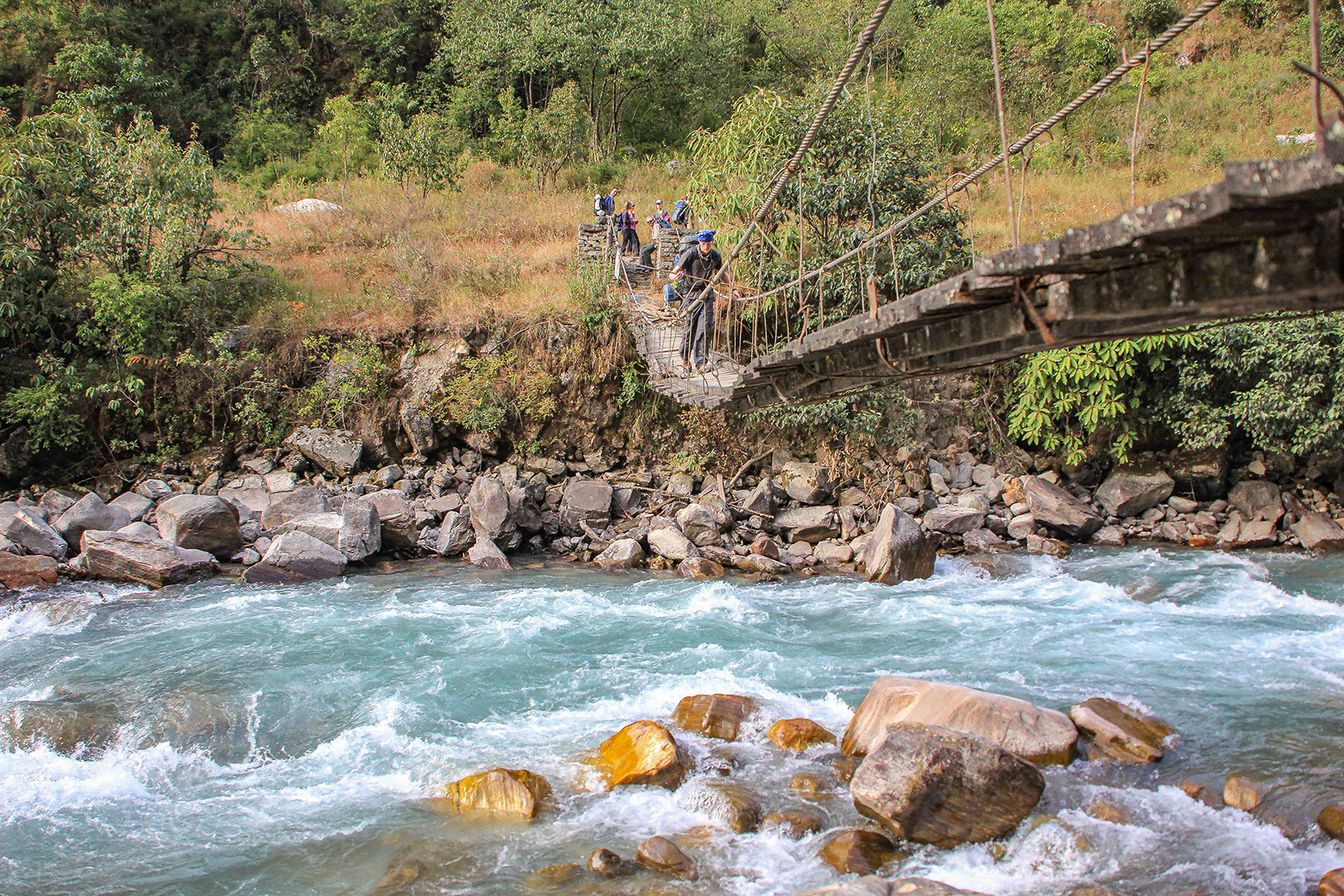
Kanchenjunga Base Camp Trek
26 Days
This circular trek takes you up through lush valleys full of seasonal flowers that receive the heaviest monsoon rains throughout the Himalayan range, north into spectacular high alpine landscapes full of woodlands and mountain streams.
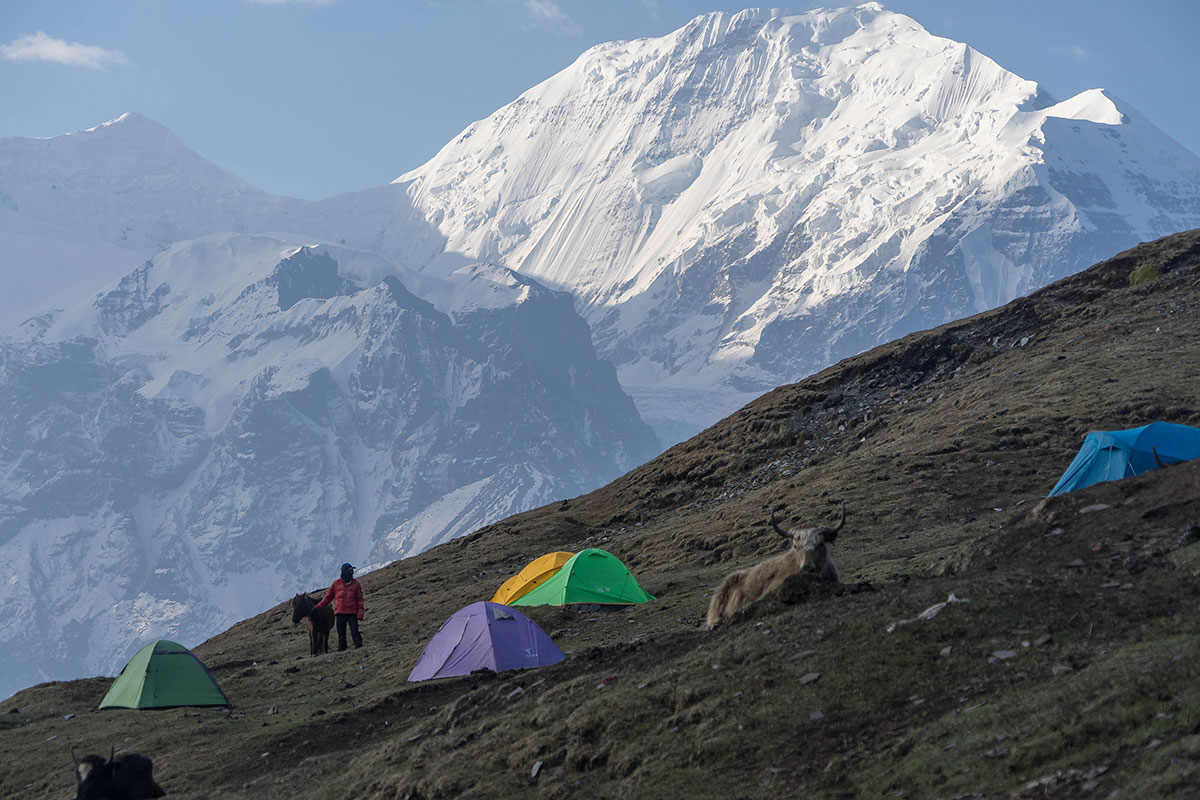
Nar Phu Annapurna Circuit Trek
17 Days
Trekking through remote villages steeped in Tibetan heritage and still following their ancient traditions of yak herding, harvesting wild herbs for medicinal purposes, and trading across the Tibetan border it will be like stepping back in time.

TSUM VALLEY MANASLU CIRCUIT TREK
22 Days
Just as diverse as the ethnic population, so too the scenery varies from the lush, low elevation valleys growing rice and bananas, inhabited predominantly by the Hindu ethnic groups of Indo-Aryan origin, through rhododendron and bamboo forests, where you begin to encounter communities of Tibeto-Burmese origin who practice Hinduism, Buddhism or a mixture of both.

KANCHENJUNGA BASE CAMP TREK
26 Days
This circular trek takes you up through lush valleys full of seasonal flowers that receive the heaviest monsoon rains throughout the Himalayan range, north into spectacular high alpine landscapes full of woodlands and mountain streams.

NAR PHU ANNAPURNA CIRCUIT TREK
17 Days
Trekking through remote villages steeped in Tibetan heritage and still following their ancient traditions of yak herding, harvesting wild herbs for medicinal purposes, and trading across the Tibetan border it will be like stepping back in time.
CONTACT US
Let us help you plan the trip of your dreams
Address
GPO Box: 8974 CPC 437
Kathmandu, Nepal.
Nepal Govt. Registration
11881/424 1134/066
Phone
Our Team
Diaries
Featured Trips
Bespoke For You
CONTACT US
Let us help you plan the trip of your dreams
Address
GPO Box: 8974 CPC 437
Kathmandu, Nepal.
Nepal Govt. Registration
11881/424 1134/066
info@himalayanquests.com
Phone
+977 9849 141067

